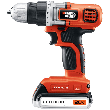Repairing a Running Toilet
Written by Lee Wyatt (last updated October 9, 2020)
There are typically two types of problems that you can count on your toilet running into sometime during the year. The first is a simple clog, and coming in second by only a little bit, is a running toilet. Repairing a running toilet is also one of the easiest home plumbing jobs that anyone can accomplish. Simply follow these instructions, and be prepared to get your hands wet.
- Inspect the floating device. In order to diagnose where the problem that is causing your toilet to run lies, you will need to inspect the interior of your tank. This means that you will need to first take off the tank lid, and then look at the floating device. These floating devices, also called ball cocks, are a simple valve attached to a floating ball by a long rod or plastic canister. Listen and look at this valve and see if you notice (or hear) any water coming out. If you do, then the problem lies there. Also take a look at the diaphragm assembly for the floating device to ensure that it is still holding the proper shape, and doesn't need to be cleaned.
- Check the tank flap. Another common problem area for running toilets is the tank flap at the bottom of the tank. Look at this flap (usually a red or black cone that fits over the hole of the tank), and press down on it. If the sound of the running water stops when you do this, then you know it is the problem, and should be replaced.
- Turn off the water. Once you have identified the problem (or problems) you can begin working. To do this, you need to shut off the water supply to the toilet, or you will end up wasting a lot of water and raising your water bill unnecessarily. After you have shut off the water, flush the toilet several times to help drain as much of the water as possible, and prevent you from making a larger mess.
- Perform the needed repairs. If you need to replace the tank flap, remove it from the toilet and take it with you to the home improvement store so that you can get the proper replacement. With the proper replacement in hand, simply install it in the reverse manner that you removed it, and you are good to go. If the problem lies with the floating device assembly, either replace, clean, or adjust the part as necessary. For example, there are times when the control rod became bent accidentally, or the spring may have slipped. Put the rod back into the proper shape, or replace the spring, and then you should be good to go.
- Turn the water back on. In order to check to make sure the work was done properly, you will need to allow water back into the tank. The easiest way to do this is by turning the water supply back on, and allowing the tank to fill.
- Test your work. When the tank is full, you should try flushing the toilet at least once. This will allow you to simulate actual use, and allow you to tell if the toilet wills top running. In the event that the toilet doesn't stop running, you will need to repeat the procedure focusing on the other parts that you didn't replace, fix, or clean. Repeat as often as necessary until you have a properly working toilet again.
When you have tested your work, and are satisfied with the results, all you have to do now is clean up. This clean up work should be fairly easy, wiping up a few puddles and possibly throwing away a parts package or two. Just be sure that you keep an eye out on the part, or parts, that you fixed for future failure. Each model of toilet has a tendency to have certain parts fail more often than others, and it may be that these are those parts on your toilet.
Author Bio
Lee Wyatt
Contributor of numerous Tips.Net articles, Lee Wyatt is quickly becoming a regular "Jack of all trades." He is currently an independent contractor specializing in writing and editing. Contact him today for all of your writing and editing needs! Click here to contact. Learn more about Lee...
Preventing Clogged Drains
Perhaps one of the most common plumbing problems that a homeowner can experience is a clogged drain. After all, this is ...
Discover More
Planning a Vegetable Garden
It is never too late, or too early, to begin planning a vegetable garden. In fact, the more time you take planning your ...
Discover More
Maintaining Melons
Whether it is a watermelon, cantaloupe, muskmelon, or one of the many other kinds of melons available, this fruit can be ...
Discover More
More Home Improvement Tips
Removing a Toilet
Before you can install a toilet, you have to remove your old one. Use this checklist and you are going to be able to do ...
Discover More
Installing Low-Flow Toilets
Compared with the nearly 7 gallons of water it takes to flush a pre-1993 toilet, low-flow toilets take a mere 1.6 gallons ...
Discover More
Installing a Toilet
Instead of calling plumber save some money by installing your own toilet, it's not as hard as you may think. Here's how.
Discover More

Comments